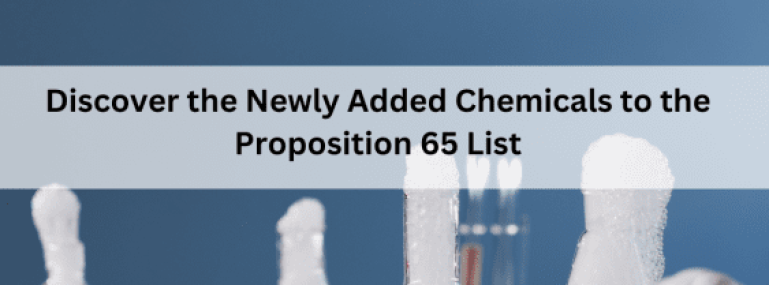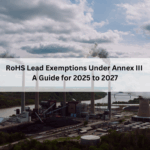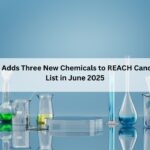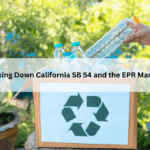In a significant move aimed at bolstering consumer safety, the Office of Environmental Health Hazard Assessment (OEHHA) has recently expanded the list of substances known to cause cancer under California’s Proposition 65. As of August 11, 2023, three additional compounds have made their way onto the list: Anthracene, 2-bromopropane, and dimethyl hydrogen phosphite. Here’s what you should know about these developments.
New Additions to the Prop 65 List
Before diving into the details, let’s take a look at the newly added substances:
| Restricted substance name | Type of Toxicity | Mechanism | CAS number |
| Anthracene | cancer | Labour code mechanism | 120-12-7 |
| 2-Bromopropane (2-BP) | cancer | Labour code mechanism | 75-26-3 |
| Dimethyl hydrogen phosphite | cancer | Labour code mechanism | 868-85-9 |
Under Proposition 65, these substances are officially recognized as known carcinogens by the state of California. This designation serves as a warning to consumers and businesses about the potential risks associated with exposure to these chemicals.
Embedded problem :
- The state has identified anthracene, 2-bromopropane, and dimethyl hydrogen phosphite as substances known to cause cancer in accordance with Proposition 65.
- The exposure to 2-bromopropane can result in dizziness, headaches, nausea, and skin or eye irritation. It is possible for the nervous system to be damaged by long-term exposure.
- When DMHP is in contact with the eyes, it can cause irritation and redness.
- The inhalation of anthracene dust or vapours from heated anthracene can cause respiratory irritation. Inhaling high concentrations for an extended period of time may have more serious effects on the respiratory system.
Possible solutions include :
- The updated listings were created using the “Labor Code” procedure described in HSC section 25249.8(a) and Title 27 California Code of Regulations section 25904. This technique incorporates the conclusions of the International Agency for Research on Cancer (IARC), particularly those regarding compounds that the IARC has classified as human or animal carcinogenic.
- IARC’s findings were extremely significant in this case. According to the International Agency for Research on Cancer (IARC), 2-bromopropane is classified as Group 2A, which indicates that it is “probably carcinogenic to humans.” Both dimethyl hydrogen phosphite and anthracene have been classified as Group 2B, which indicates that they may be carcinogenic to humans. Cattley et al., 2023) supported IARC’s assessment of their carcinogenicity to animals.
The OEHHA has made the following decision:
As the primary agency responsible for implementing Proposition 65, the OEHHA thoroughly evaluated these substances. Proposition 65 requires businesses to provide warnings to Californians about significant exposures to chemicals that cause cancer, birth defects or other reproductive harm. Exposure to these chemicals may take place when products are acquired or consumed. As specified in Title 27, CCR, section 25904(b)(3), anthracene, 2-bromopropane, and dimethyl hydrogen phosphite qualify as chemicals known to cause cancer under Proposition 65. Violation of CA Prop 65 can lead to Penalties that can be as high as $2,500 per violation, per day.
Ensure compliance with our expert services
In light of these updates, businesses are faced with the challenge of maintaining compliance with Proposition 65 regulations. That’s where ComplianceXL comes in. We offer consulting services to assist businesses with Prop 65 compliance and the gathering of Prop 65 supplier declarations from vendors. Additionally, we provide specialized training on Prop 65 compliance needs for businesses. Our services equip businesses with the information and resources they need to stay in compliance with the ever-changing California Proposition 65 rules.
FAQ’s:
1. What is anthracene?
Anthracene is a polycyclic aromatic hydrocarbon consisting of three fused benzene rings. It is a crystalline solid that exhibits a blue fluorescence.
2. What safety precautions should be taken when working with 2-bromopropane?
Whenever working with 2-bromopropane, make sure the environment is well ventilated and wear protective equipment (PPE), including gloves and safety goggles. Ensure that you do not encounter your skin or inhale vapour.
3. What are the four minimum procedure for Proposition 65 listing and delisting activities?
a) Public notice that a chemical is under consideration for listing.
b) A public comment periods.
c) Review of comments received.
d) Notice of the final decision.
4. What is NSRL?
No Significant Risk Levels (NSRLs) is safe Harbor level for cancer-causing chemicals.





